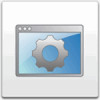Lexmark Network Printer Device MarkNet External Print Server Quick Start - Page 9
Macintosh, UNIX/Linux - file linux
 |
View all Lexmark Network Printer Device manuals
Add to My Manuals
Save this manual to your list of manuals |
Page 9 highlights
Creating ports and installing drivers Read the detailed instructions on the drivers CD. Click View Documentation and look for information about network printer installation for your specific Windows environment. If you choose to install without using the instructions on the drivers CD, you need a basic understanding of network printing on TCP/IP networks, installing printer drivers, and the process involved in creating new network ports. Macintosh Your printer connects automatically to AppleTalk networks and becomes readily visible to other network clients. Note: A PostScript Printer Description (PPD) file provides detailed information about the capabilities of a printer to UNIX or Macintosh drivers or applications. For Mac OS 8.6-9.x, you must create a printer object (icon) on the desktop of each network client using the LaserWriter 8 printer driver and the custom printer PPD file. For Mac OS X, select Add Printer and create a queue in the print center using the PostScript Printer Module and the custom printer PPD file. Information about creating the printer object on your AppleTalk clients is on the drivers CD that shipped with your printer. A PPD installer is in the downloadable Web package available on Lexmark's Web site at www.lexmark.com. Depending upon which version of the drivers CD shipped with your printer, you may also find this software on the drivers CD. Launch the PPD installer and follow the instructions to install the PPDs. UNIX/Linux Your printer supports many UNIX and Linux platforms, such as Sun Solaris and Red Hat. Note: The Sun Solaris package is located both on the drivers CD and on Lexmark's Web site at www.lexmark.com. Lexmark provides a printer driver package for each supported UNIX and Linux platform. The package contains all the necessary drivers and PPDs. The User's Guide in each package gives detailed instructions for installing and using Lexmark printers in UNIX and Linux environments. You can download these printer driver packages from Lexmark's Web site at www.lexmark.com. Depending upon which version of the drivers CD shipped with your printer, you may also find the driver package you need on the CD. 7















